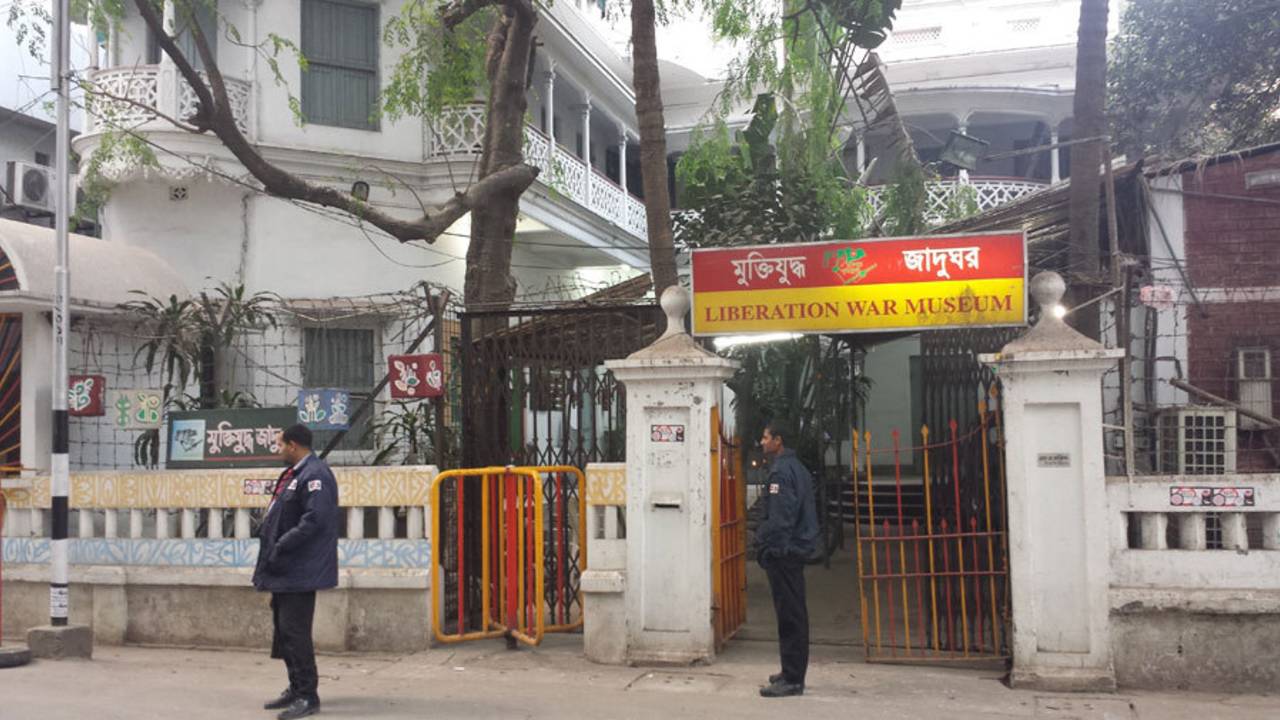Soothing and familiar Dhaka
ESPNcricinfo's Sri Lanka correspondent Andrew Fernando discovers the cuisine, language and residents of the capital of Bangladesh reminds him of home
Andrew Fidel Fernando
01-Feb-2014
The Liberation War Museum has heart-rending displays of Bangladesh's post-colonial strife in 1970 • ESPNcricinfo
A curry brimming with coconut cream, shocked with an army of red chilli; a palm-lined beach and a blast of baila on the bus - anyone who travels, especially for work, knows the occasional craving for home comforts, even when their surroundings are vibrant and fascinating. But for a Sri Lankan, there is something soothing and familiar about Dhaka, which seems a monumentally weird thing to say at first glance, but bear with me.
Sri Lankans like to think we are a very welcoming bunch - we don't think we are merely good, we feel we are unbeatable. Olympic-level hospitality: the Michael Phelps of looking after guests. Even beyond the constant offers for food and tea though, Dhaka residents might give Sri Lankans a grand run for their money when it comes to warmth towards outsiders.
Smiles, like directions, are given up easily and generously. Conversation is free and friendly. The press-box jokes begin before play and flow rapidly until well after stumps. Someone is always around to offer a translation, so as the sole foreigner I can keep track. In my week in the city, I've also been adorned with gifts and invited into homes and out to dinner.
And that's the other thing about Dhaka. It's a tough place to find a bad meal. I haven't so much as encountered a mediocre one anywhere. Saffron, bay leaves and the occasional star anise are nearly-alien spices to Sri Lankan cuisine, but the apparent skill of anyone allowed near a stove in Dhaka has not only prevented hankerings for home, but also prompted considerable excitement for Chittagong, where the food is supposed to be even better, thanks to its proximity to the ocean.
There are other similarities. I haven't been in a country where I have picked up the gist of what's being said so quickly. The Bangla - or Bengali - words for the colours are virtually the same as in Sinhala, as are numbers one to ten. Elsewhere, words from rice (bath), to saw (dekhen), to president sabhapathi, are almost identical.
Darker parallels are also evident. Like in Sri Lanka, parts of Bangladesh's post-colonial history have been defined by conflict, and the excellent Liberation War Museum in Segunbagicha details the most heart-rending year of the nation's recent past. Letters, clothing and arms belonging to notable 1971 Muktijuddha (freedom fighters), and stories of the abhorrent abuses Bangladeshi women suffered during the war bring the horrors of violence alive. A display of the remains of people killed in the Dhaka neighbourhood of Mirpur, where the Sher-e-Bangla stadium is situated, drives the hopelessness of it home. Bangladesh wrestles with this war's aftermath decades later, just as Sri Lanka seeks a way to cope with its troubled past, radically different though these conflicts were.
It is perhaps for more positive reasons that so many Sri Lankans have chosen to settle here. There is a thriving Sri Lankan business community in the city - an oddity for South Asian metropolises apart from Chennai - and many involved with Sri Lankan cricket have also plied their trade here at some point in their careers. Former Sri Lanka batsman Athula Samarasekera was a Dhaka superstar before settling down in Melbourne. Current SLC cricket operations manager Carlton Bernadaus coached here, as did Champaka Ramanayake. The present curator of the Mirpur Stadium, Gamini de Silva, is also Sri Lankan. Like me, maybe they have all found a little bit of home away from home.
Andrew Fidel Fernando is ESPNcricinfo's Sri Lanka correspondent. He tweets here
